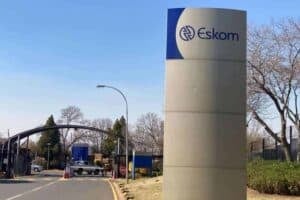De Ruyter also shared more on the outlook for load shedding, which he said will likely not be going away any time soon.

There is a risk that the full R3.8 billion being pursued from some of Eskom’s former executives and board members might not be recovered, the power utility’s CEO Andre de Ruyter has said.
De Ruyter was speaking during a webinar on Tuesday, hosted by the Cape Town Press Club, where he unpacked some of the challenges the state-owned company is facing.
Last week Eskom announced that it has filed a summons, along with the Special Investigating Unit, to recover R3.8 billion from a total of 12 defendants, including the Gupta brothers and their business associate Salim Essa. Also named are former executives – including former chief executive officer Brian Molefe, former chief financial officer Anoj Singh, former group executive of generation Matshela Koko and former head of legal Suzanne Daniels – for failing to uphold their fiduciary duties to the power utility.
Former board chairperson Ben Ngubane and board members Chwayita Mabude and Mark Pamensky are also listed in the affidavit.
The R3.8 billion is but a drop in the ocean of Eskom’s financial woes – it has a debt burden of R450 billion which it intends to reduce to R200 billion and has been pursuing cost cutting measures to free up cash to pay debt.
When asked if it was realistic to believe that the R3.8 billion could be recovered, De Ruyter said that Eskom is working with the Asset Forfeiture Unit and its legal advisors to prepare anti-dissipation orders, with the aim to prevent people from spending ill-gotten gains before they can be recovered.
Strong case
“We are trying to preserve as much as possible. Will we be able to reclaim or recover all the R3.8 billion? Probably not,” said De Ruyter. “I suspect a significant amount of money has already spent.”
But De Ruyter said it was a matter of principle in pursuing the funds – and that according to Eskom’s lawyers, they have a strong case.
Commenting more broadly on Eskom’s R450 billion debt burden, De Ruyter reiterated previous statements that there is not one silver bullet to deal with the debt.
“We need to address the cost of our debt. We need to address our cost base in order to free up more cash to pay down debt. We are very grateful for the continued equity support we are getting from National Treasury,” he said.
“But debt does not go away by itself – this is still a conundrum that needs to be resolved- it is more than an Eskom issue, it is a national issue,” he added. While Eskom can do all it can within its powers, ultimately it is a public issue to be addressed.
Eskom is also struggling to recover revenue owed to it by municipalities – with the top 20 municipalities’ outstanding debt being R30 billion. Debt owed by Soweto municipalities amounts to R12 billion. Eskom has been turning to the courts to get attachment orders – Eskom has attached movable assets from some municipalities, and has even attached a bank account of one municipality to get negotiations going to on a payment plan, he explained.
“The municipal issue is a substantial challenge we have to come to grips with. It relates to a very large extent to the capacity within municipalities to collect debts, ensure meters are read, to invoice, to bill, to collect and to enforce. These practices and mechanisms are often not properly in place in these defaulting municipalities,” he said.
Eskom is working with provinces and the Cooperative Governance and Traditional Affairs Department to deal with it. De Ruyter said that with “political will” the problem would be resolved over time – he noted that the Deputy President David Mabuza, had been encouraging municipalities to pay for electricity.
De Ruyter also shared more on the outlook for load shedding, which he said will likely not be going away any time soon.
“It is likely that we will have increased load shedding going forward,” he said. This is mainly due to the reliability or long-term maintenance of plants which has to be done – this requires units to be shut down. Not maintaining units will increase the risk of “significantly worse” load shedding in future, he said. “We simply don’t have alternatives.”
On Monday night, demand was 32 000 MW, and Eskom managed to meet it, without resorting to load shedding, De Ruyter said. However, Eskom had to burn a “substantial” amount of diesel to power its Open Cycle Gas Turbines, to meet demand.
“We are doing our best to keep the lights on, but not at the expense of doing our maintenance,” he said.
For more news your way, download The Citizen’s app for iOS and Android.






